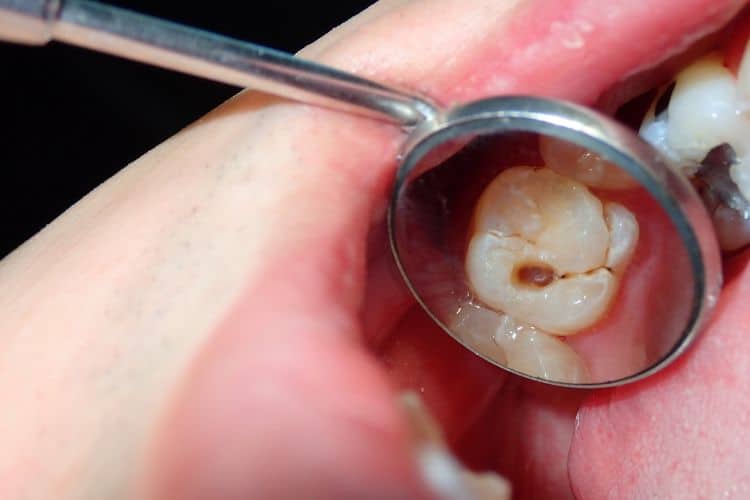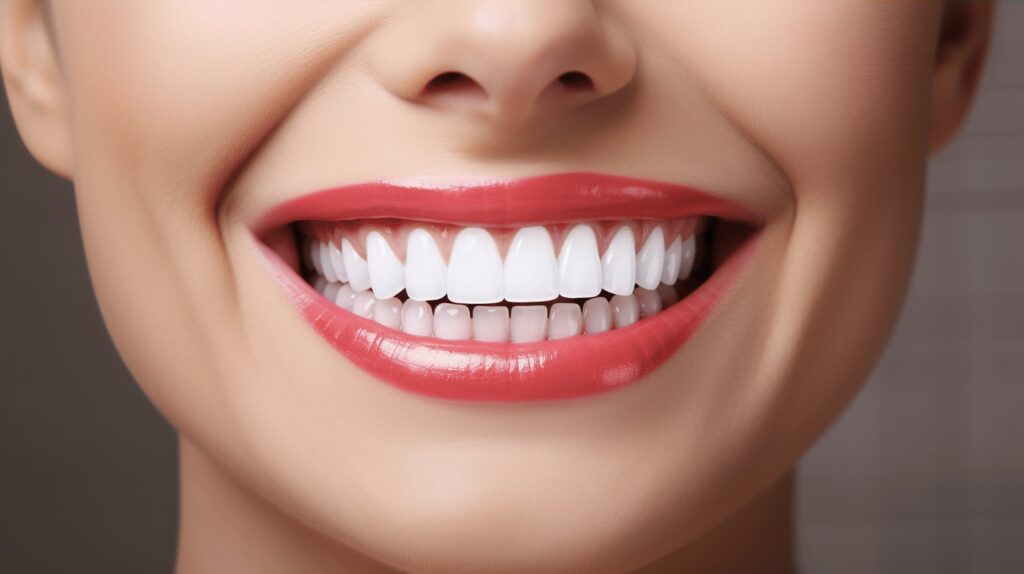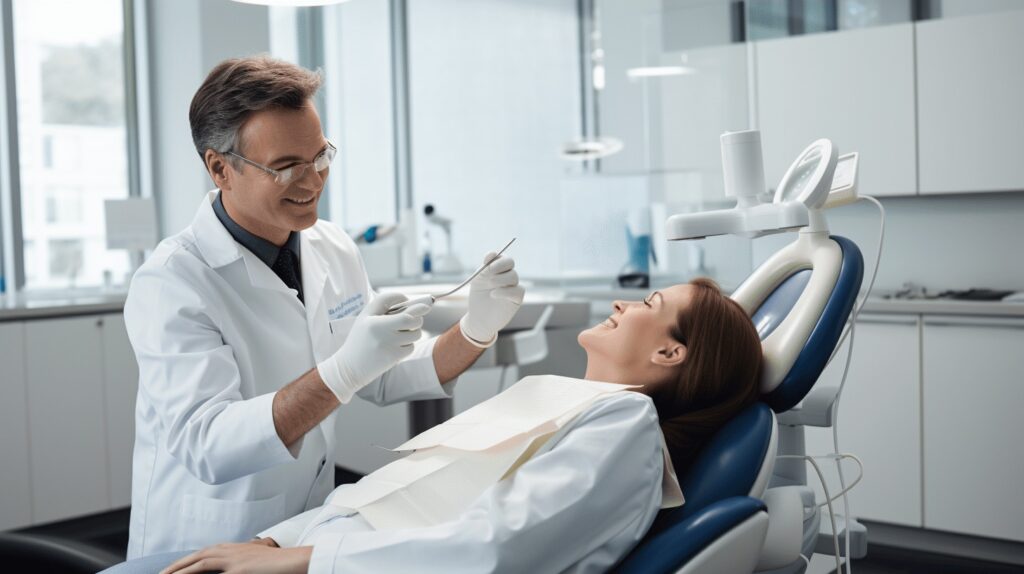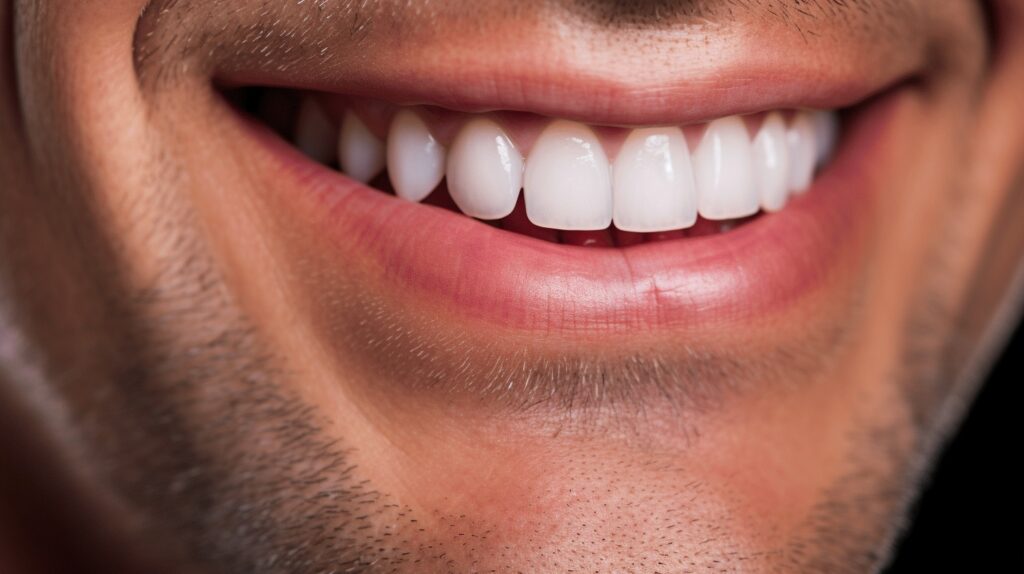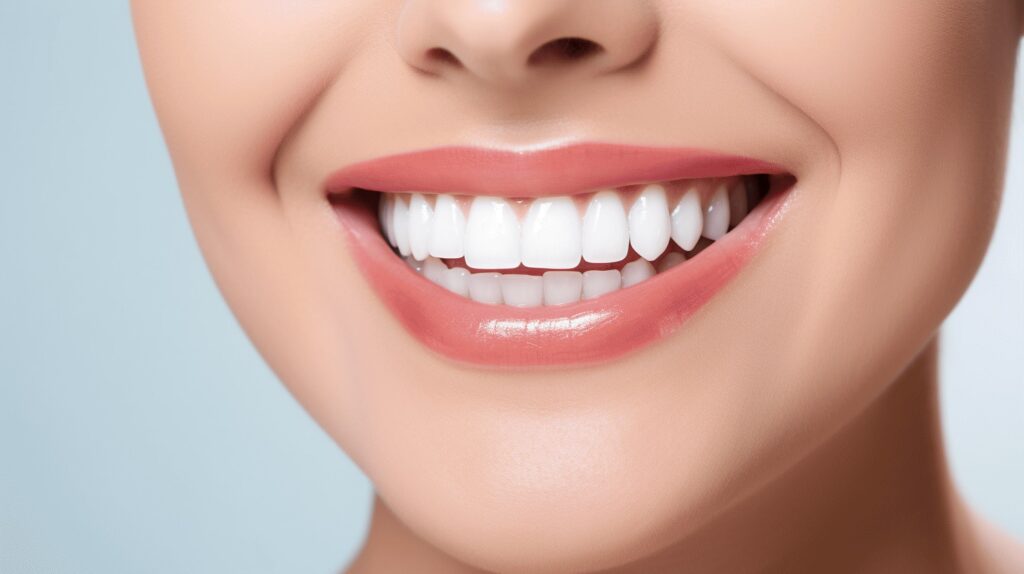Welcome to our deep-dive into the world of Preventative Dentistry Tips! 🦷
A shiny white smile doesn’t just offer a confidence boost; it’s also a ticket to optimum overall health. As Benjamin Franklin wisely stated, “An ounce of prevention is worth a pound of cure,” and this is particularly true when it comes to dental health. Tooth decay, an issue that affects both adults and children worldwide, is largely preventable, and mitigating measures are a crucial part of modern dentistry.
In this all-encompassing guide, we’ll unlock the secrets to maintaining a cavity-free mouth while exploring the fascinating landscape of preventative dentistry, from handy every day oral hygiene habits to the high-tech solutions changing the face of dental care as we know it. We’ll also look at the impact of personal and societal factors, such as socioeconomic status and geographical location, on dental health.
Ready to put a cap on cavities and empower yourself with invaluable knowledge? Well, roll out your dental floss and join us on this enlightening journey! 🌟
Table of Contents
Prevalence of Tooth Decay
Taking care of oral health seems like an easy daily routine, and yet many find themselves under the harsh grip of one of the most common dental problems – tooth decay. From adults to children, millions suffer from this problem daily. It’s easy to disregard or underestimate the need for proper oral hygiene until it\’s too late.
Adults – Preventative Dentistry Tips
Did you know that tooth decay doesn’t discriminate by age? It’s an issue adults face as much as children. To put it into perspective, let’s talk numbers. Incredible as it may seem, approximately 90% of adults aged between 20 and 64 have experienced tooth decay in their lifetimes😱.
Rather alarming, isn’t it? It quickly paints a picture of the dire state of oral health in adults. But the good news is, it’s entirely preventable.
Children
Moving over to children, the situation isn’t much better. Owing to sugary diets and inadequate dental care awareness, a shocking 46% of youngsters aged 3-19 have untreated dental caries – a fancy name for cavities. More alarming, tooth decay is crowned one of the most common chronic diseases amongst children aged 6-19. Makes you think twice about giving your kid that extra candy now, doesn’t it?
The silver lining here is the chance for education and prevention. With the correct measures, our children can grow into adults with excellent teeth.
The surge in tooth decay isn’t something to be taken lightly. It’s a silent plague that sneaks up on adults and children alike. But the prevention stage isn’t neglected – not by a long shot! Recently, there’s been an uptick in the resources available for maintaining good oral hygiene and health.
To dodge decay, prevention is the best recipe. And guess what? We’ve got the perfect guide on the Essential Tips for Good Oral Health right here. Our guide comes equipped with a catalogue of hacks, handy information, and essential recommendations bookmarked by dental professionals.
Having a great white smile is easier than you might think. Today’s not a moment too late to instigate significant changes for you and your family’s oral health. Remember, it all begins with you, a toothbrush, toothpaste, and who could forget – floss. Do it for the countless smiles you’ll light up the world with in the future! 😄
Impact of Socioeconomic Status on Teeth Health
The intricate ties between socio-economic status and overall health indicators are well-documented, but have you ever considered how it may also affect your oral health? Today, we’re spotlighting the often-overlooked relationship between socioeconomic status and teeth health. This topic might not be as trendy as eating organic or practicing mindfulness, but it is nonetheless vital for your overall health and well-being. 🦷💪
It may come as a surprise, but the state of your teeth often stands as a stark testament to your socio-economic standing. Studies reveal that children from deprived areas are more than twice as likely to have dental decay compared to those from affluent areas. The reason for this disparity is clear when we break down and examine the contributing factors.
- Access to Care: Affluent areas typically have more dentists and dental clinics per capita than deprived areas. This disparity in coverage inherently leads to more significant challenges in accessing proper dental care for those in less affluent areas.
- Lifestyle Factors: Children in deprived areas often consume more sugary drinks and snacks, which are more affordable but incredibly damaging to their oral health.
- Awareness and Education: Affluent areas often have more access to educational resources on maintaining oral health, thereby promoting a culture of preventive care, as opposed to one of treatment.
Allow us to quote, “The teeth can serve as a barometer for a child’s broader social well-being” emphasizing that the state of a child\’s oral health can indeed be a mirror reflecting their overall well-being.
It is essential to bridge this socio-economic divide to ensure equal access to proper dental care and help each child maintain a bright and healthy smile. Addressing this issue head-on will require multi-pronged strategies – improving access to dental care, promoting education on proper dental practices, and advocating for healthier diets in deprived areas.
Let’s shed light on these unnoticed disparities and take action. A healthy smile should not be perceived as a luxury. Instead, it truly needs to be an affordable reality for every child. 😊
Preventative Measures in Dentistry
Getting ahead of oral issues before they become severe is the core of preventative dentistry. It’s a holistic approach to oral health that aims to keep you smiling confidently for longer. We’ll discuss fluoride’s role in supporting strong teeth and the importance of regular dental visits. Then, we’ll explore how community water fluoridation goes a long way in reducing tooth decay. Buckle up and let’s dive right in!
The Effect of Fluoride
Fluoride is to teeth what oxygen is to fire. It actively wards off tooth decay by binding to enamel crystals. Think of it like a shining knight, protecting your castle (your teeth) from invaders (tooth decay). Here’s how it works:
- First, fluoride teams up with your saliva to help rebuild (remineralize) weakened tooth enamel.
- Additionally, it slows down the loss of minerals from tooth enamel.
- Finally, it decreases the acid\’s ability to damage the tooth enamel.
Voila! Prevention from tooth decay is done right.
Regular Dental Visits
You know that not-so-thrilling feeling of sitting down in a dentist’s chair? 😬 Well, that’s probably on your list of things to avoid, right? But here’s a counterintuitive fact: The more often you see your dentist, the less likely you are to need serious work. Regular check-ups and cleanings can actually help you keep these visits to a minimum. Here’s why you need these preventative appointments:
- Dentists can detect signs of oral issues that you might miss.
- Regular cleanings banish tartar, the hardened plaque build-up that’s more nefarious than it sounds.
- Your friendly dental hygienist will show you how to clean your teeth properly at home.
So make sure you book your regular dental appointments. Consider why we get our cars serviced to prevent bigger problems down the road – the same principle applies to our teeth. 🚗💨
Community Water Fluoridation
By now, we are convinced fluoride should be your teeth’s BFF. But did you know that fluoride is also available in your daily glass of water? Community water fluoridation, recommended by numerous public health organizations, can be a game-changer in reducing tooth decay.
However, not all communities have access to fluoridated water. So if tap water isn’t your primary source, you might want to discuss supplemental fluoride options with your dentist. This little step could have a big impact on your long-term oral health!
Tooth decay and other oral diseases can often be prevented with just a little bit of extra care each day. To learn more about preventative measures, dive deeper into these Techniques for Stronger Teeth.
Consequences of Neglecting Oral Hygiene
Taking good care of your dental hygiene is not just about having a sparkling white smile. It’s so much more than that! In fact, it’s a critically important aspect of overall health. Neglecting oral hygiene may lead to complications such as tooth decay, gum disease, and even heart disease.
You see, the mouth is a primary entry point to our body. If we respect it and keep it clean, it aids us in efficiently breaking down our food into manageable components for digestion. However, if we neglect it, it can become a breeding ground for harmful bacteria.
Brushing our teeth, flossing, using mouthwash, and other at-home dental care practices are all essential parts of maintaining oral health. However, without regular visits to the dentist, it’s impossible to wholly keep away harmful bacteria and the detrimental consequences they bring.
Here’s a shocking fact: did you know that in the U.S. alone, around 26% of adults have untreated dental cavities? Yes, you read it correctly, a whopping one in four adults! The number is somewhat startling and can peradventure be attributed to the lack of regular dental visits, which contributes significantly to the progression of tooth decay.
Tooth decay is not the only issue, of course. Neglected dental hygiene could indirectly affect other parts of your body too. For instance, research has shown a fascinating connection between oral health and heart disease. A build-up of oral bacteria can get into the bloodstream, causing inflammation and diseases elsewhere in the body.
So, what should one do? The solution is quite simple, actually.
- Brush your teeth at least twice a day
- Floss daily to remove plaque from places your toothbrush can\’t reach
- Eat a healthy diet to provide the nutrients necessary to prevent gum disease
- Avoid cigarettes and other tobacco products, which can cause gum disease
But most importantly, don’t neglect those regular visits to the dentist. They aren’t just for cleaning; they can identify potential problems early and prevent them from developing into major issues.
So, we encourage you to be proactive about your dental health. It’s not a matter of beauty, but an integral part of your health. Keep those pearly whites clean, visit your dentist regularly, and smile confidently knowing that you’re not just preserving your charming smile, but also ensuring your overall wellbeing!
Prevalence of Dental Caries in the South East Asian Region
Promising a charming smile and fostering overall health, the importance of dental hygiene cannot be overemphasized. Still, dental caries, often classified as one of the most widespread oral diseases, stealthily lurks in the corners of our mouths, posing a significant threat to our health. 😷
Hitting closer home, did you know that dental caries is the apex predator in the oral health jungle of the South-East Asian region? An astounding 70% to 95% of school-aged children are trapped in its jaws. This unpleasant reality calls for immediate action, educating ourselves about this prevalent threat, and implementing strategies for prevention and early intervention.
For the unversed, dental caries, often referred to as “cavities” or “tooth decay,” is the destruction of the harder tissues of the teeth (enamel, dentin, and cementum). Sneaky sugar-loving bacteria always leave their signature move: a trail of acid that eats away at our pearly gloss, causing lingering pain, tooth loss, and gum diseases. Recovering from such damages without prompt dental intervention can be quite tricky.
The extensive prevalence of dental caries in South-East Asia is due to a mishmash of causes:
- 💊 Lack of awareness about oral hygiene: Many people underestimate the value of regular brushing, flossing, and dental check-ups.
- 🍬 High consumption of sugar: The rise of packaged foods, sugary drinks, and easily accessible sweets considerably increases the risk.
- 💔 Socio-economic factors: The underprivileged often struggle with access to quality health care, pushing dental health to the sidelines.
- 🏥 Inadequate oral health services: The region still lacks sufficient dental clinics and trained professionals to cater to its considerable population Preventative Dentistry Tips.
With this in mind, it is imperative to break the chain of dental caries and declare our dental independence with consistent oral hygiene practices. After all, we don’t want our toothy grins to turn into toothless grimaces, do we? We need to draw together, reaffirming our commitment to oral health, because a healthy mouth is indeed a gateway to a healthy life. 👄💪
Remember, the battle against dental caries isn’t impossible to win. “Tooth be told,” we have the power to tip the scales in our favor. So, it’s about time we brandish our weapons of brushed teeth and break free from the clutches of this oral health tormentor. We’ve got this, right? After all, preservation is always better than cure. Let’s aim for a caries-free South-East Asia, one tooth at a time! 🏆🦷
Technological Advances in Preventative Dentistry
Thriving in a digital era, dentistry too, has joined the revolution—unveiling groundbreaking technologies that substantially improve preventative measures and treatments. From 3D printing to laser dentistry and artificial intelligence, the domain of dental science is experiencing an unprecedented level of innovation. Let’s explore these scene-stealing tech advancements and how they facilitate oral health.
3D Printing – Preventative Dentistry Tips
Gone are the days of waiting weeks for dental prosthetics. Say hello to 3D printing! 👋 With this cutting-edge technology, dentists can create perfectly fitted crowns, bridges, or dentures right in the office—while you wait.
Here’s what makes 3D printing fascinating:
- Accuracy: Three-dimensional printers deliver prosthetics with a remarkably accurate fit, eliminating the discomfort of ill-fitting crowns or bridges.
- Speed: It dramatically reduces the waiting time. Now, instead of weeks, you can get your dental prosthetics within hours!
- Customization: Each dental piece is tailored to your unique dental anatomy, assuring optimal functionality and aesthetics.
Laser Dentistry
With laser dentistry, anticipate a future where the drill becomes a thing of the past. 👀
Lasers make a myriad of dental procedures more precise, less invasive, and often devoid of pain.
Why are we excited about laser dentistry?
- No-Anesthesia Procedures: For many procedures that previously required anesthesia, lasers can do the job painlessly.
- Speedy Healing: Lasers minimize tissue damage, reducing bleeding and swelling. This means, faster healing times!💨
- Kills Bacteria: During surgeries, lasers sterilize the area by killing bacteria, minimizing the risk of infection.
Artificial Intelligence – Preventative Dentistry Tips
Artificial intelligence is reshaping the dental landscape by aiding early diagnosis. 🚀 Imagine software that can detect cavities or gum disease long before they cause damage Preventative Dentistry Tips. Exciting, isn’t it?
Let’s see how AI plays its part:
- Predictive Analysis: AI can analyze oral conditions over time, predicting potential future issues. It’s like having a crystal ball revealing your dental future. 🔮
- Early Detection: AI algorithms can scrutinize dental imaging to detect signs of cavities or gum disease before they become severe.
- Personalized Treatments: With AI, treatments can be personalized based on your unique oral ecosystem, paving the way for true preventive dentistry!
Embracing these technological advances in preventative dentistry, we can relish healthier smiles with fewer visits to the dentist. So let’s welcome this new age of painless and quick dental solutions—a smarter approach to maintaining our dazzling smiles! 😀
Role of Consistent Oral Hygiene in Preventive Dentistry
Meet your new best friend in the journey to an impeccable oral health: Consistent Oral Hygiene. Did you know that by maintaining a regular dental hygiene routine, we significantly minimize the risk of dental issues like tooth decay and gum disease? Moreover, it paves the way to a brighter, healthier smile that boosts our confidence. It’s a critical component of preventive dentistry, and it starts with something as simple as brushing with fluoride toothpaste Preventative Dentistry Tips.
Brushing with Fluoride Toothpaste
“Prevention is better than cure!” 🥼 We’ve all heard this adage, and it couldn’t be more accurate when it comes to oral health. One good habit that can save us from a lot of dental woes is brushing our teeth with fluoride toothpaste at least twice daily.
Let’s brush up on the benefits of brushing with fluoride toothpaste:
- Fluoride protects our teeth against the acids produced by plaque bacteria and sugars, preventing tooth decay.
- It helps harden tooth enamel, making our teeth more resistant to acid attacks.
- Brushing regularly with fluoride toothpaste aids in removing plaque, a major cause of tooth decay and gum diseases.
- It promotes remineralization, repairing the early stages of tooth decay even before the decay becomes visible.
The importance of consistent oral hygiene for preventive dentistry can’t be overstated. However, brushing is just the first step! It’s also recommended to floss daily, rinse your mouth with an antibacterial mouthwash, and make regular dental visits an integral part of your three-step dental healthcare regimen Preventative Dentistry Tips.
Remember, there’s a world of power hidden in our smiles, and it’s fueled by good oral hygiene. So, let’s smile brighter and better by adopting consistent oral hygiene as a non-negotiable part of our wellness journey. Our Preventative Dentistry Practices guide offers more detailed insights for maintaining impeccable oral health. Embrace these practices and unlock the secret to a healthier, happier smile. 😊
Conclusion – Preventative Dentistry Tips
As we tread this winding road of dental health, we’ve uncovered some impactful truths. From understanding the gripping prevalence of tooth decay to appreciating the immense power of preventative dentistry measures, our journey has underscored one valuable lesson: oral health is a vital aspect of our overall wellness.
No longer should we consider our dental health as a mere afterthought. The ripple effects of neglecting oral hygiene are far-reaching and manifest not only physically but also socially and economically. Even the societal implications of varying socioeconomic statuses on dental health cannot be overstated, serving as a stark reminder of the disparities in dental health access.
But fear not, advancements in technology have brought us revolutionary tools in the form of 3D printing, laser dentistry, and artificial intelligence, making strides not only in correcting dental issues but in preventing them from happening in the first place.
With knowledge comes power. Armed with this understanding, fostering and nurturing good oral habits can only translate into substantial benefits down the line. Daily brushing with fluoride toothpaste, making regular visits to the dentist, and welcoming community initiatives like water fluoridation are all practices worth considering Preventative Dentistry Tips.
We can’t stress enough – maintaining your pearly whites isn’t merely for aesthetics; it’s a passport to overall wellbeing. And that’s where we step in!
At Wilshire Smile Studio, we combine expertise with state-of-the-art technology and a gentle touch. It’s not just about preventing tooth decay; it’s about preserving that million-dollar smile. So, let’s keep these discourses alive, for every discussion brings us a step closer to a world free of dental challenges. 😊🦷💙 Remember, our smiles are worth fighting for!
Book your free consultation with us online or call (323) DENTIST (323-336-8478) today.
Frequently Asked Questions
1. What is preventative dentistry?
Preventative dentistry refers to the practice of maintaining good oral hygiene and taking proactive measures to prevent dental problems before they occur. It includes regular dental check-ups, cleanings, fluoride treatments, dental sealants, and education on oral care.
2. Why is preventative dentistry important?
Preventative dentistry is essential because it helps prevent oral health issues like tooth decay, gum disease, and cavities. By practicing good oral hygiene and visiting the dentist regularly, potential problems can be identified, treated early, and even avoided altogether.
3. What are the key components of preventative dentistry?
The key components of preventative dentistry include regular brushing and flossing, a healthy diet, limiting sugary snacks and drinks, regular dental check-ups and cleanings, fluoride treatments, dental sealants, and patient education.
4. How often should I visit the dentist for preventative care?
It is recommended to visit the dentist for preventative care at least twice a year, or every six months. Regular dental check-ups and cleanings help detect and address any potential oral health issues early on, preventing them from escalating.
5. Are dental sealants effective in preventing tooth decay?
Yes, dental sealants are highly effective in preventing tooth decay, especially in children and teenagers. A dental sealant is a thin protective coating applied to the chewing surfaces of the back teeth to create a barrier against bacteria and food particles.


